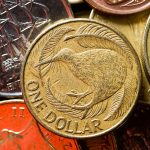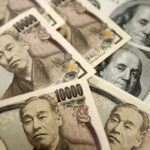The Aussie eased off from a four-month high against the US dollar on Friday, after data showed consumer spending in the US rose in February by the most in three months as incomes increased, adding to evidence the economy is gaining momentum after the unusually harsh winter.
AUD/USD hit a session high at 0.9295 at 02:00 GMT, after which the pair erased advances to trade at 0.9244 at 13:15 GMT, losing 0.15% for the day. Support was likely to be found at March 27th low, 0.9216, while resistance was to be met at November 21st high, 0.9334.
Consumer spending, which accounts for almost 70% of the American economy, rose 0.3% last month, in line with analysts estimates and after a 0.2% increase in the previous month that was smaller than previously reported. Incomes also advanced 0.3% in February, in line with analysts expectations and matching Januarys gain, data by the US Commerce Department showed today.
The US citizens were trying to shrug off the effects of the inclement weather as they rushed out to shop, supported by a labor market that was also gaining traction.
“Looking past some of the noise in the data, the trend is for modestly stronger personal income and spending, which should accelerate throughout the year as the economy builds momentum,” Michelle Meyer, a senior U.S. economist at Bank of America Merrill Lynch in New York, said before the report, cited by Bloomberg.
Todays data also revealed that core price, excluding the volatile food and fuel items, inched up 0.1% last month and were up 1.1% from the previous year, the same as in January and in line with analysts estimates.
Meanwhile, earlier in the trading day the Aussie advanced to the strongest level since November against the US dollar after the Chinese Premier Li Keqiang said his country can’t ignore “difficulties and risks” from a slowdown in the economy and that China is ready to deal with any economic volatility that occurs this year. He also added policy makers are confident growth will fluctuate in a reasonable range. China is the biggest trading partner of Australia.
“Aussie and kiwi can continue the trend of gains,” said Sam Tuck, a senior foreign-exchange manager at ANZ Bank New Zealand Ltd. in Auckland, cited by Bloomberg. Li’s comments “encouraged people to think that China is going to provide some more stimulus or is prepared to act against weakness, which gave people confidence that China is not going to slow down in the short term.”
Elsewhere, NZD/USD hit a 2-1/2-year high of 0.8697 at 09:20 GMT, after which the pair trimmed advances to trade little changed at 0.8673 at 13:10 GMT. Support was likely to be received at March 27th low, 0.8592, while resistance was to be encountered at August 2nd 2011 high, 0.8784.
Demand for New Zealand’s dollar was heightened after a report showed yesterday the nation had a trade surplus of 818 million NZ dollars (around $706 million), more than the 600 million forecast by analysts and the largest trade surplus since April 2011.
The RBNZ was the first central bank from the developed economies, to raise its cash rate. The central bank raised its benchmark interest rate by 25 basis points to 2.75% on March 13th.
In a speech at Hong Kong, Deputy Governor Spencer indicated that the RBNZ’s loan may have reduced pressure on the nation’s currency.





